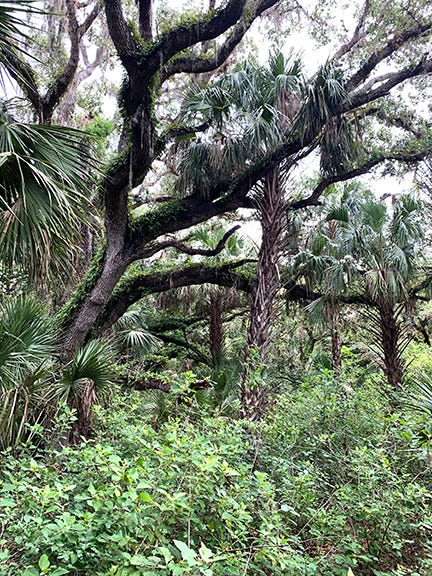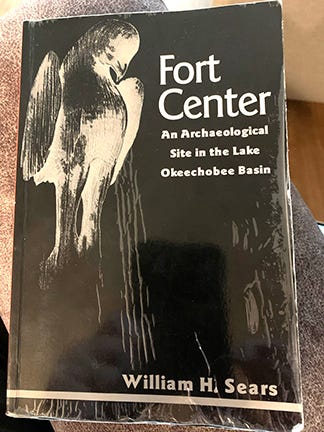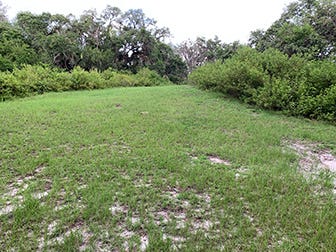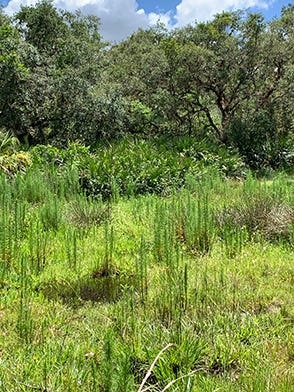Last week I visited the Fort Center Archaeological Site located in Glades County a few miles west of Lake Okeechobee. This was one of my favorite visits as I continue researching my upcoming historical fiction novel Calusa Gold. If you have been to Europe or the Middle East, you likely saw Roman ruins 2000 or more years old. In Rome, the Coliseum still stands as a clear reminder of that ancient culture. However, you could drive past Fort Center and probably even hike through the site and not realize a people just as interesting as the Romans once thrived there.

To get to the the Fort Center site, you have to drive about a mile on an unpaved road west of State Route 78. Once you park, it is about a 2.5 mile hike out to the mounds and other features. The entire site is part of the Fisheating Creek Wildlife Management Area. For the hike, I relied on a set of excellent directions on the Fort Center page of the “Florida Hikes” website. I followed this on the 6.5 miles hike, and it was a very big help.
Several months ago I purchased a book, Fort Center: An Archaeological Site in the Lake Okeechobee Basin by William H. Sears. Dr. Sears and his teams of researchers and students from the University of Florida and Colgate University conducted detailed field research at Fort Center over a six-year period starting in 1966.
The Native American people that settled in the Fort Center area are called the “Belle Glade Culture,” and while they appeared long before the Calusa Tribe, which is the focus of my book, Fort Center contains man-made mounds similar to the ones the Calusa built.
The following images show a mound referred to as “Mound 10” in Dr. Sears’ book, and it is the only one at Fort Center not completely overgrown with trees and brush.
Dr. Sears devotes many pages of his book to details and analysis of the man-made charnel pond at Fort Center. The Belle Glade people once built a platform over the pond on which they conducted cremations. Eventually the platform collapsed. Sear’s book states they found remains of about 150 people in the pond. When you go to these Florida sites, the mounds are often not very obvious, but the charnel pond was very clearly a pond. It was almost dried up when I went there on June 6, but I imagine it does fill up more as it rains more in the summer.
Keep reading with a 7-day free trial
Subscribe to Will Granger's Writing and Historical Fiction to keep reading this post and get 7 days of free access to the full post archives.







